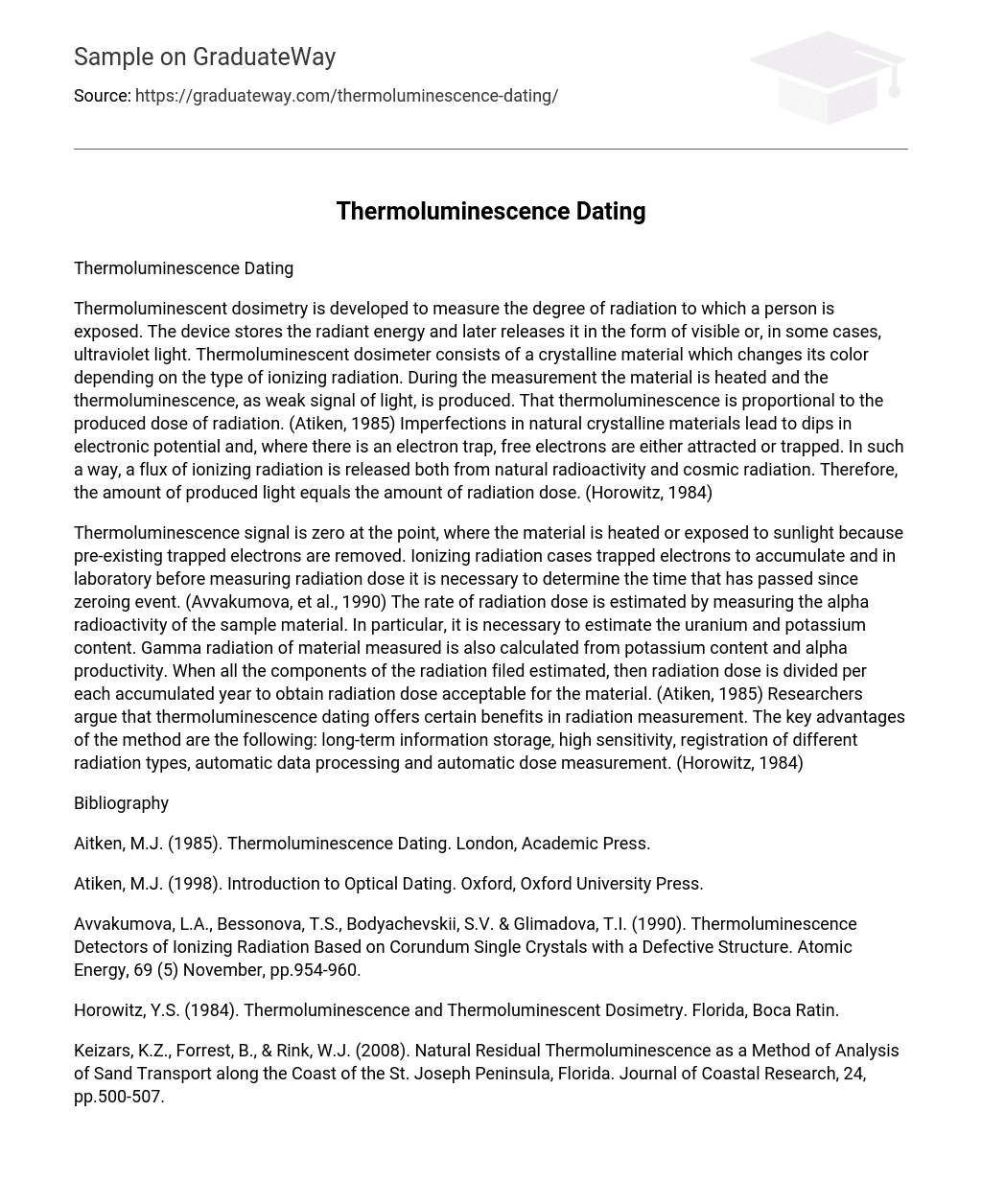Thermoluminescent dosimetry is developed to measure the degree of radiation to which a person is exposed. The device stores the radiant energy and later releases it in the form of visible or, in some cases, ultraviolet light. Thermoluminescent dosimeter consists of a crystalline material which changes its color depending on the type of ionizing radiation. During the measurement the material is heated and the thermoluminescence, as weak signal of light, is produced. That thermoluminescence is proportional to the produced dose of radiation. (Atiken, 1985) Imperfections in natural crystalline materials lead to dips in electronic potential and, where there is an electron trap, free electrons are either attracted or trapped. In such a way, a flux of ionizing radiation is released both from natural radioactivity and cosmic radiation. Therefore, the amount of produced light equals the amount of radiation dose. (Horowitz, 1984)
Thermoluminescence signal is zero at the point, where the material is heated or exposed to sunlight because pre-existing trapped electrons are removed. Ionizing radiation cases trapped electrons to accumulate and in laboratory before measuring radiation dose it is necessary to determine the time that has passed since zeroing event. (Avvakumova, et al., 1990) The rate of radiation dose is estimated by measuring the alpha radioactivity of the sample material. In particular, it is necessary to estimate the uranium and potassium content. Gamma radiation of material measured is also calculated from potassium content and alpha productivity. When all the components of the radiation filed estimated, then radiation dose is divided per each accumulated year to obtain radiation dose acceptable for the material. (Atiken, 1985) Researchers argue that thermoluminescence dating offers certain benefits in radiation measurement. The key advantages of the method are the following: long-term information storage, high sensitivity, registration of different radiation types, automatic data processing and automatic dose measurement. (Horowitz, 1984)
Bibliography
Aitken, M.J. (1985). Thermoluminescence Dating. London, Academic Press.
Atiken, M.J. (1998). Introduction to Optical Dating. Oxford, Oxford University Press.
Avvakumova, L.A., Bessonova, T.S., Bodyachevskii, S.V. & Glimadova, T.I. (1990). Thermoluminescence Detectors of Ionizing Radiation Based on Corundum Single Crystals with a Defective Structure. Atomic Energy, 69 (5) November, pp.954-960.
Horowitz, Y.S. (1984). Thermoluminescence and Thermoluminescent Dosimetry. Florida, Boca Ratin.
Keizars, K.Z., Forrest, B., & Rink, W.J. (2008). Natural Residual Thermoluminescence as a Method of Analysis of Sand Transport along the Coast of the St. Joseph Peninsula, Florida. Journal of Coastal Research, 24, pp.500-507.





